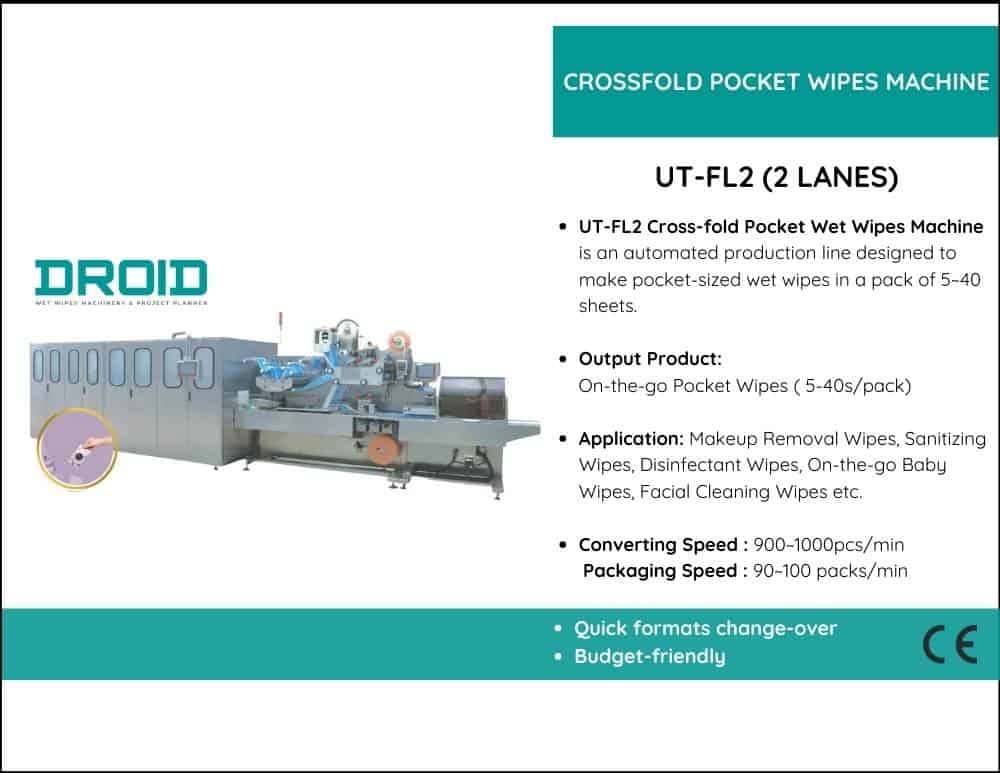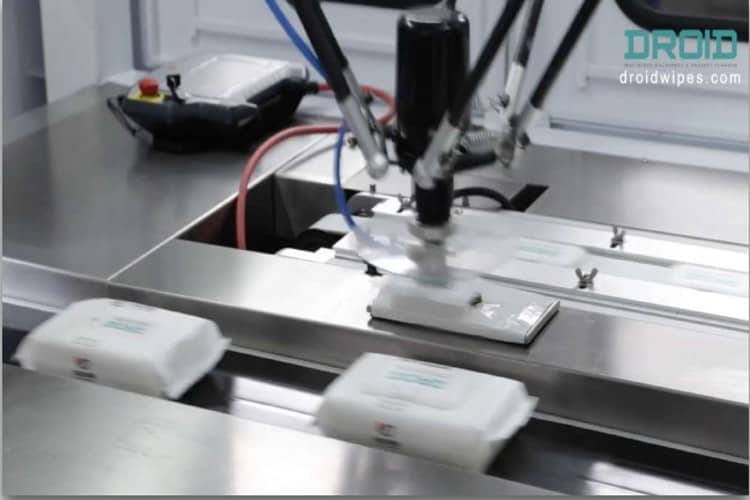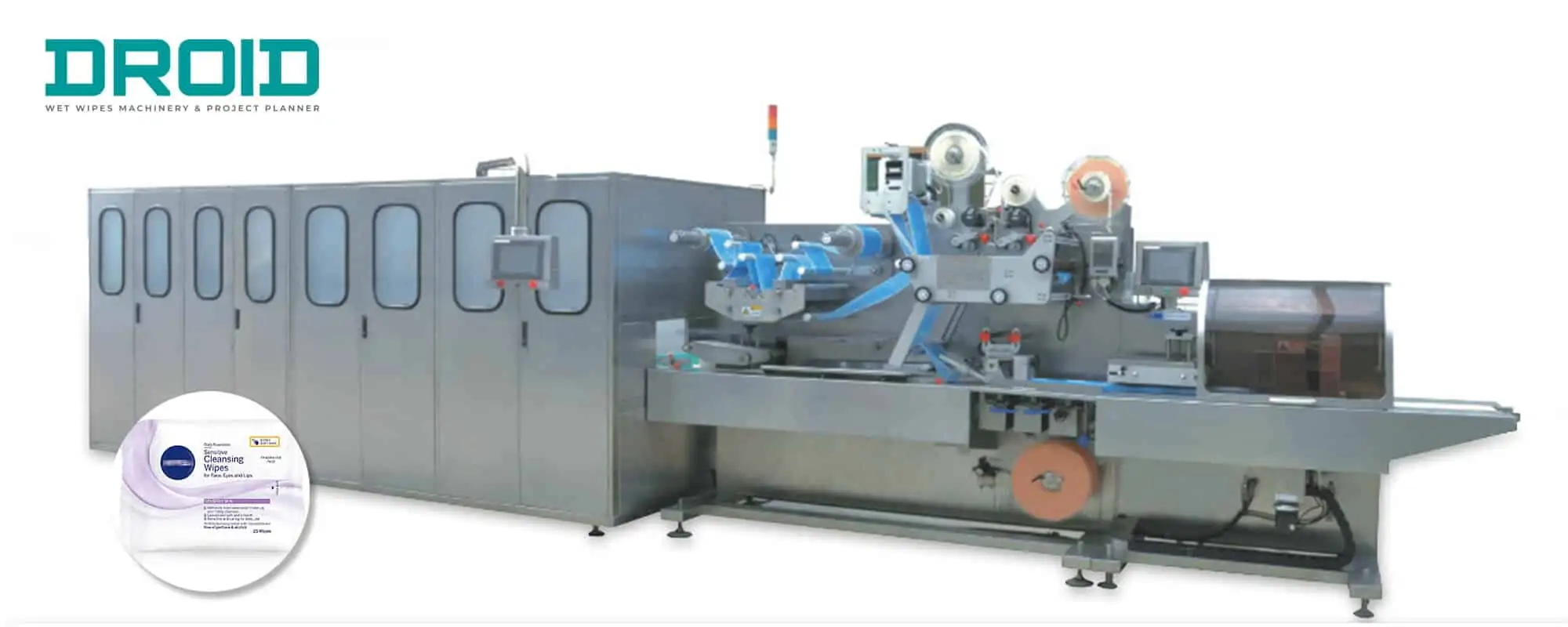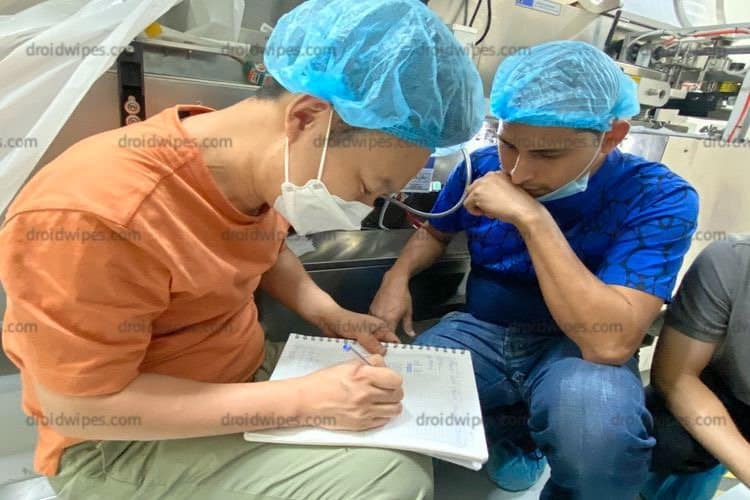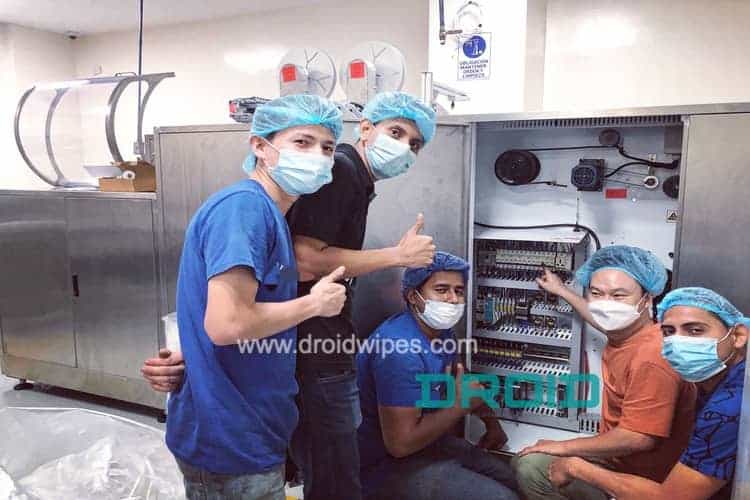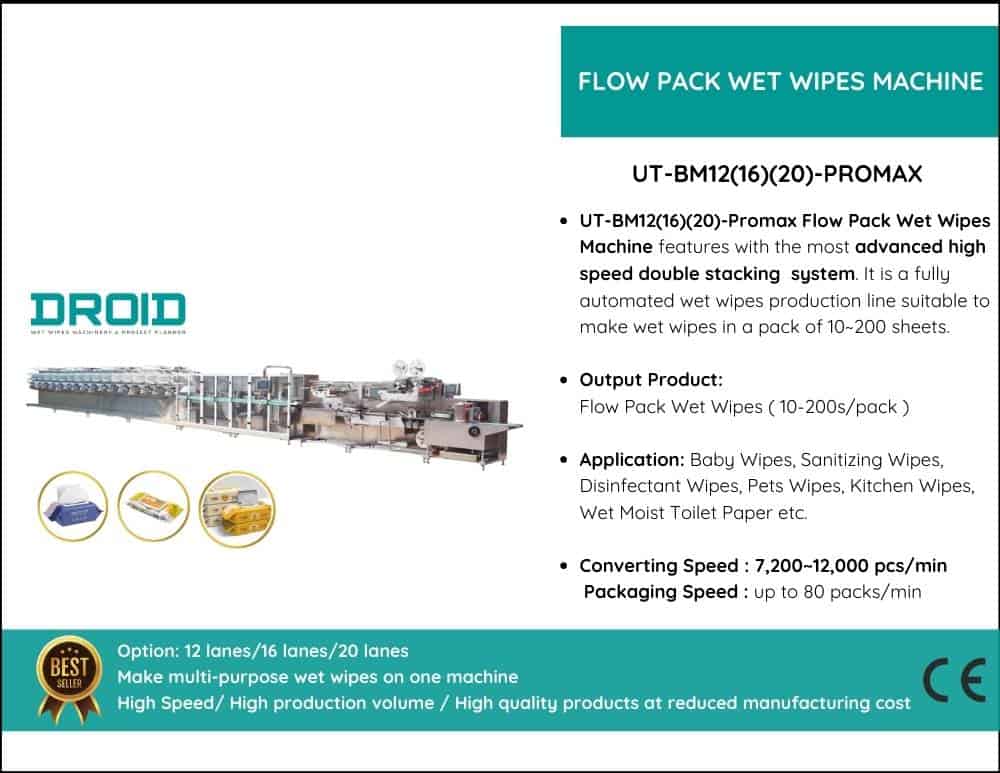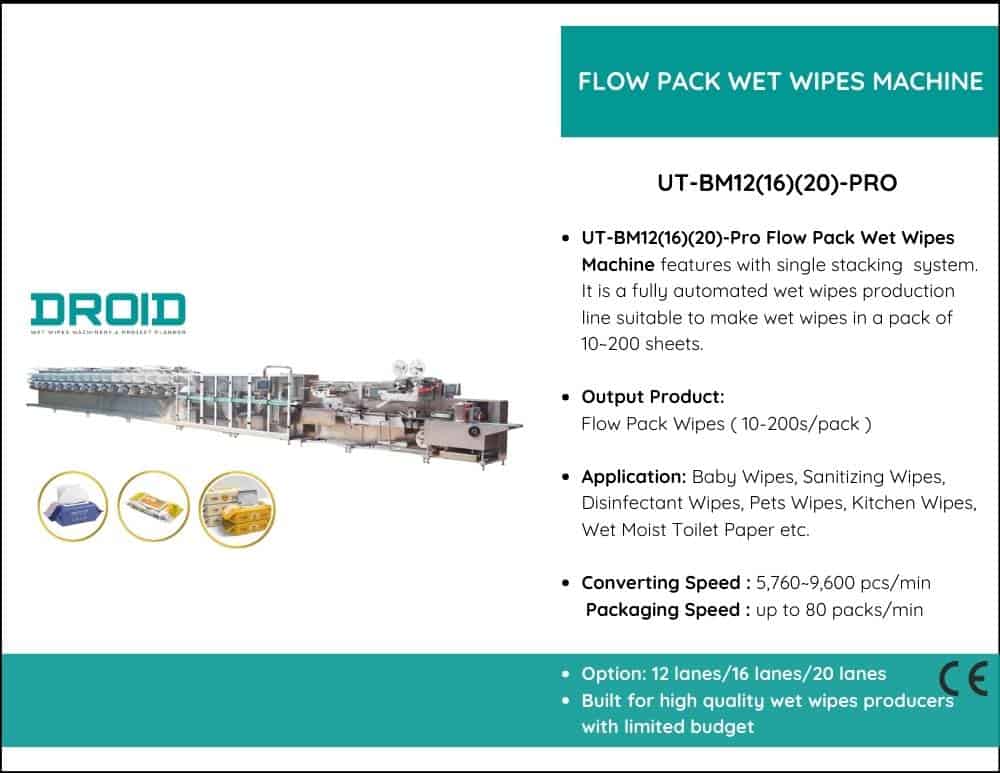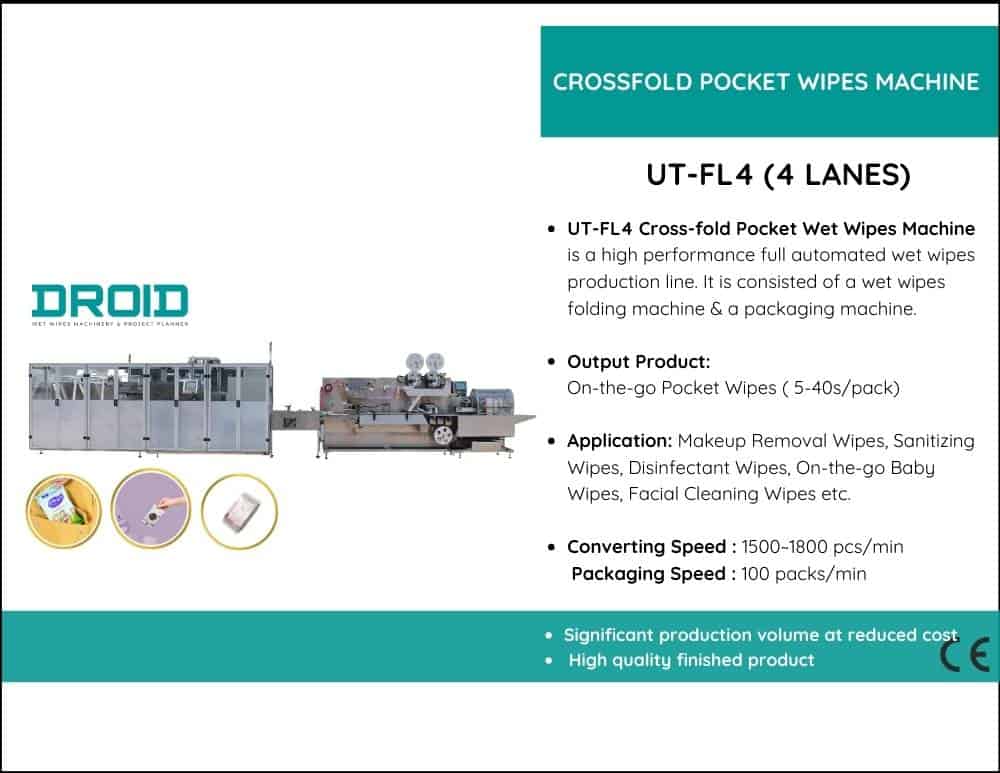Automatic wet wipe machines are made up of several vital parts that work together to make sure production is quick and of good quality:
1. Unwinding System
This device easily sends rolls of nonwoven fabric into the machine, maintaining constant tension and orientation to ensure precise processing.
2. Folding and Cutting Unit
The units for folding and cutting precisely measure and shape wipes, ensuring that every product is the same size and looks uniform. Being precise in this step reduces waste and yields a more consistent result.
3. Liquid Dosing System
This part carefully spreads chemical or moisture solutions evenly across each wipe. This maintains a stable level of wetness, prevents waste, and ensures wipes meet standards for cleanliness and performance.
4. Conveying System
The moving system transfers wipes from one stage of production to the next, improving efficiency and reducing the risk of infection by streamlining the workflow and minimizing product handling.
5. Packaging Unit
The packing tool forms wipes into their final packaging, such as flow packs, bags, or jars, and then covers them. It has rules for closing and packing that ensure wipes are safely stored, which extends their shelf life and keeps them clean.
6. Quality Inspection Sensors
During production, automated devices continuously check wipes for flaws, ensure correct wet content, and verify package integrity. This real-time tracking allows problems to be fixed immediately, which maintains high quality.
7. Control Panel and Automation System
The simple control screen makes it easy to use, change parameters, and monitor things in real-time. Advanced technology makes complicated tasks easier, reduces human errors, and enhances the overall efficiency of production.
These critical components work together to create automatic wet wipe machines that produce reliable, uniform, and efficient wet wipes, meeting the high standards of modern wet wipe manufacturing.


